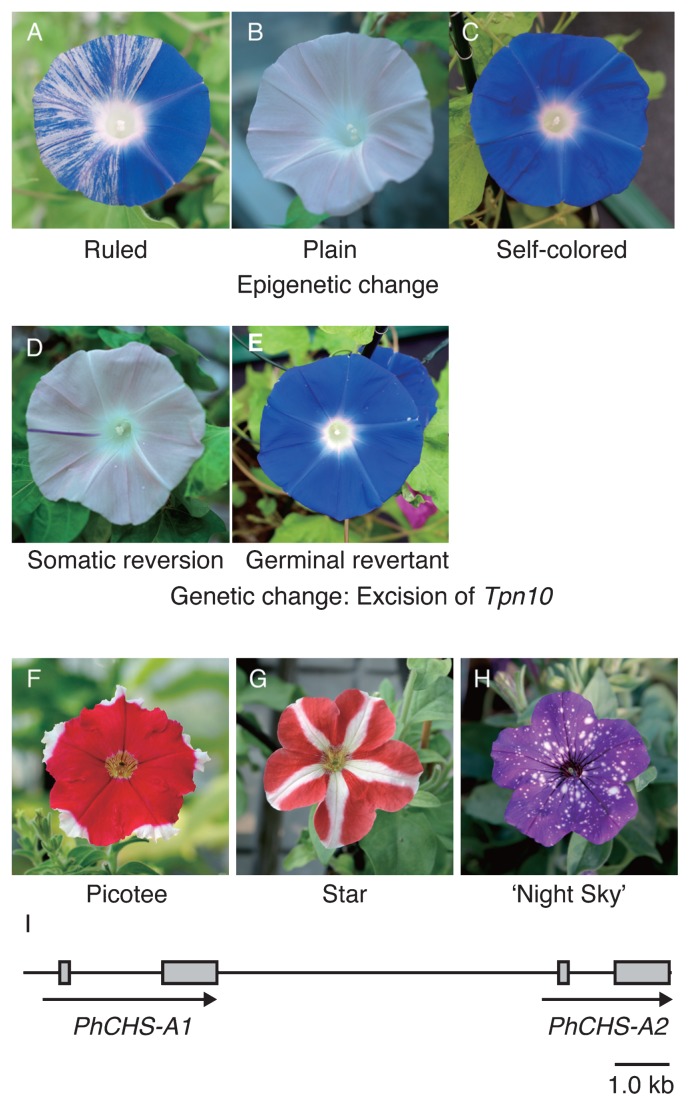Fig. 3.
Flower color patterns of the Japanese morning glory and petunia. A–E: Flower phenotypes of the Q531 line of the dk2-mutant of the Japanese morning glory. (A) Ruled plants confer non-clonal spots and sectors, hakeme-shibori (brush marks variegation). Apparently clonal spots and sectors are also occasionally observed in ruled plants. (B) Plain plants display pale pigmentation petals. (C) Self-colored plants display fully pigmented flowers. These plants carry an identical dk-2 mutation, and Tpn10 seems to be able to transpose only in plain plants. (D) Somatic reversions caused by Tpn10 excisions are occasionally observed in plain plants. (E) Germinal revertant from a plain plant. (F–I) Naturally occurring bicolor RNAi mutants of the petunia. Flower phenotypes of Star (F), Picotee (G), and the bicolor cultivar ‘Night Sky’ (Ball Seed Co.) (I). (H) Genome structure of CHS siRNA-producing locus of the bicolor petunia. Two copies of CHS genes are tandemly located.

